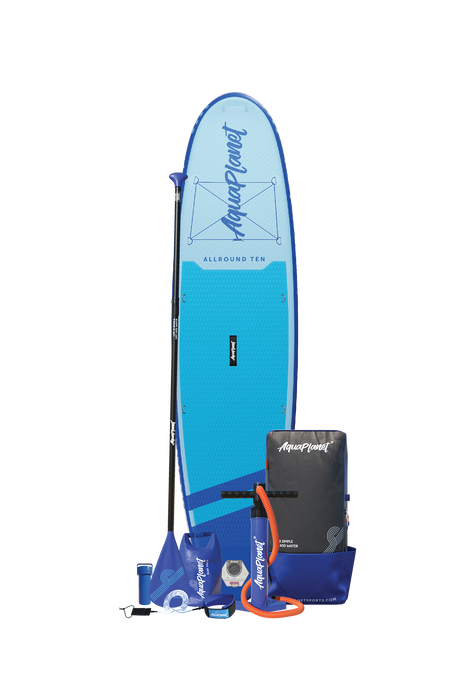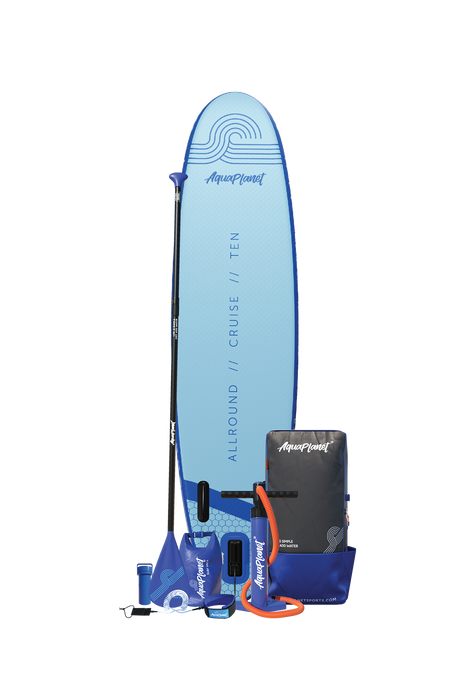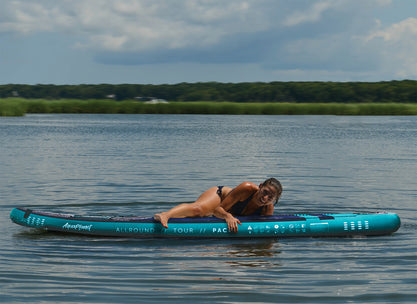If you’ve taken the plunge to invest in a stand-up paddle board (SUP), you want it to last as long as possible – or at least until you think it’s time to upgrade it to a premium board.
The good news is a paddleboard is a fairly low-maintenance piece of equipment, so there’s no reason why you shouldn’t be able to keep it in tip-top condition for years.
You just need to show it a bit of TLC after each session on the water – cleaning it, storing it in the right place and repairing any damage – and each time you bring it back out, you can be confident it won’t let you down. However, if you end up taking an accidental dunk, you have our permission to blame your tools…
So, what does a sound SUP maintenance regime involve?

Care and cleaning
We know what you’re thinking… do you really need to clean an SUP considering it spends most of its time in water? Well, yes. But you won’t have to exert too much elbow grease, unless the waters are particularly murky.
- Wash off salt water, ideally with a specially formulated for use on inflatable/ rigid paddle boards
- Clean off mud, grit or sand
- Dry before rolling/storing
- Protect your board with a conditioning/protective UV treatment
Storage

You can’t really go far wrong with storing your board, especially if you’ve got an inflatable SUP (iSUP) which packs down and can be stowed anywhere you see fit – under the bed, on top of the wardrobe, or, more conventionally, in the garage.
There are just a few things to bear in mind to ensure your board doesn’t get damaged as it’s packed away:
- Store your board in a cool and dry location
- Do not leave in the sun
- If storing your iSUP for the long term, take the time to deflate and roll it into its bag
Repairs
Paddleboarding is pretty addictive. With endless waters to travel and sights to see, you can easily find yourself going out for a paddle once a week. If you’re going to use your SUP on a regular basis, it's going to pick up a bit of damage along the way.
Thankfully, spare parts come fairly cheap, and most damage can be self-repaired. Usually, it’s just a minor pinhole puncture you have to deal with, or the valve might come loose and need tightening.
Try to make any repairs as soon as you can, to avoid making the damage worse. Or you might just find your iSUP start to deflate while out on the water… not ideal!
If you suffer any other issues with your board that you can’t self-repair, your first port of call should be the manufacturer. They should be more than happy to provide you with some assistance – we certainly are at Aquaplanet!





